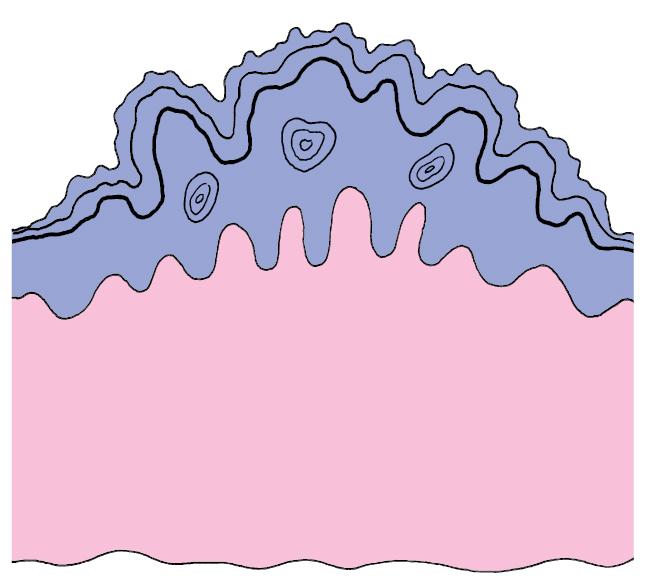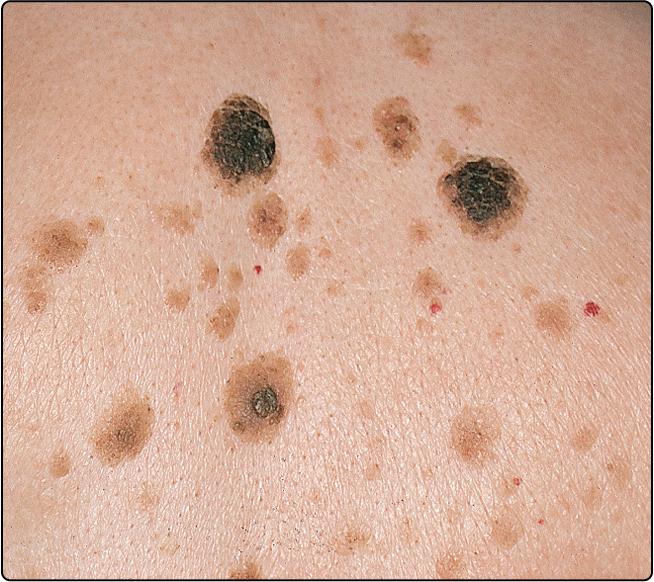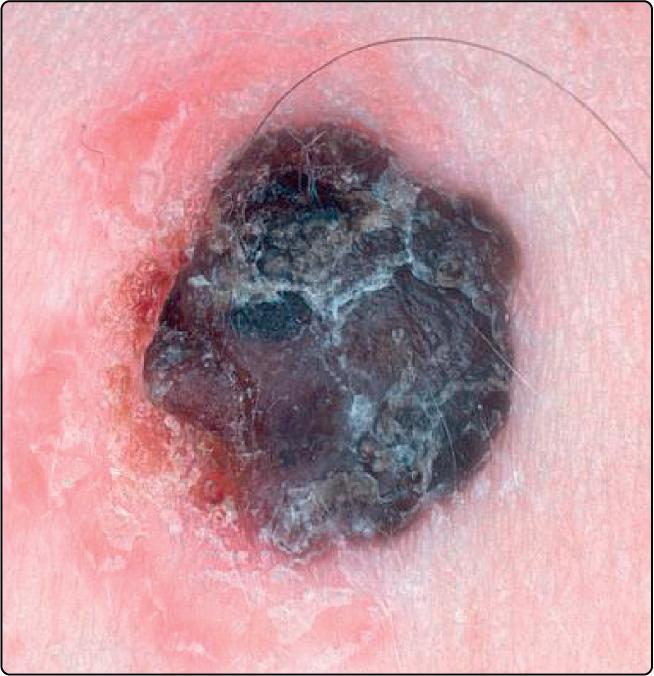Physical Address
304 North Cardinal St.
Dorchester Center, MA 02124
Skin tumours are common, and their incidence is rising in Western countries (p. 32). The treatment of skin tumours makes up a large part of current dermatological practice (p. 33). Many skin tumours of the epidermis and dermis are benign, and these are described in this section. Benign tumours of dermal structures and appendages are described in Chapter 53 (p. 116). Viral warts, actinic keratoses and naevi are mentioned elsewhere.
A seborrhoeic wart (seborrhoeic keratosis) is a common, usually pigmented, benign tumour consisting of a proliferation of basal keratinocytes ( Fig. 52.1 ). The cause is unknown, although they may be ‘naevoid’. Seborrhoea is not a feature.

Seborrhoeic warts have the following features:
often multiple ( Fig. 52.2 ), sometimes solitary

affect the elderly or middle-aged
mostly found on the trunk and face
generally round or oval in shape
start as small papules, often lightly pigmented or yellow
become darkly pigmented, warty nodules, 1–6 cm in diameter
have a ‘stuck-on’ appearance, with keratin plugs and well-defined edges.
The diagnosis is usually obvious from the physical findings and multiplicity of the lesions. Occasionally, a seborrhoeic wart can resemble an actinic keratosis, melanocytic naevus, pigmented basal cell carcinoma or malignant melanoma ( Fig. 52.3 ).

Multiple lesions can be adequately dealt with using liquid nitrogen cryotherapy. Thicker seborrhoeic warts are best treated by curettage or shave biopsy, with cautery or hyfrecation. If there is diagnostic doubt, they can be excised. Histological examination is advised in all cases.
Become a Clinical Tree membership for Full access and enjoy Unlimited articles
If you are a member. Log in here